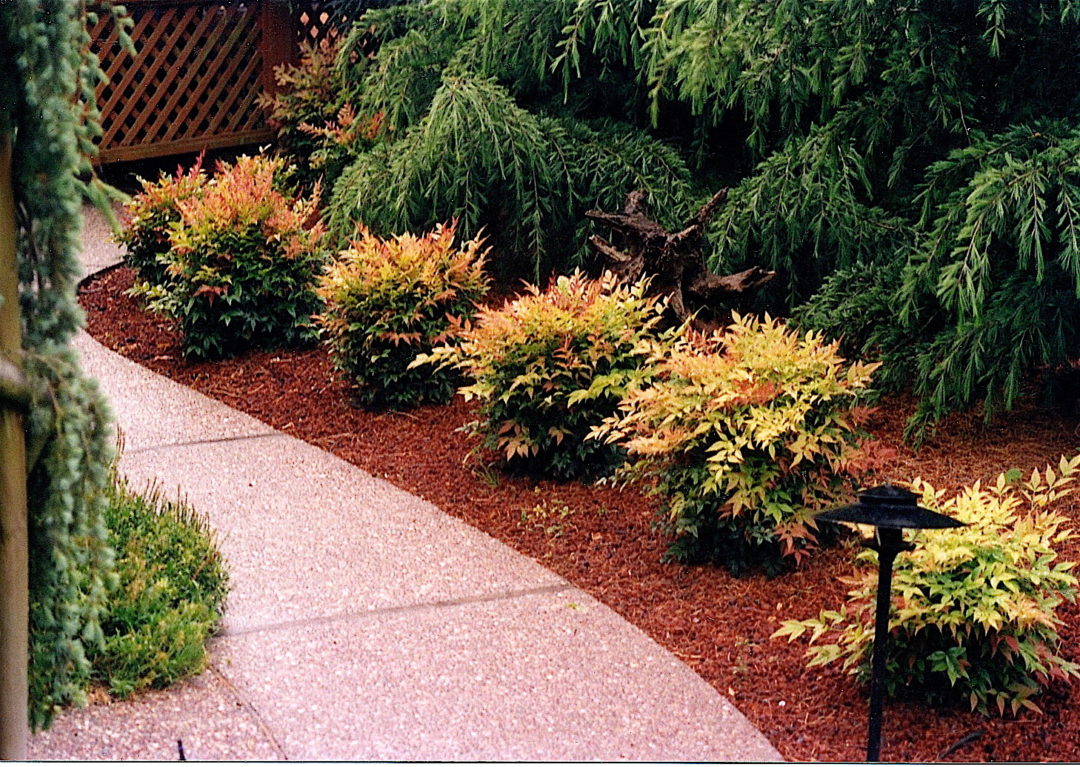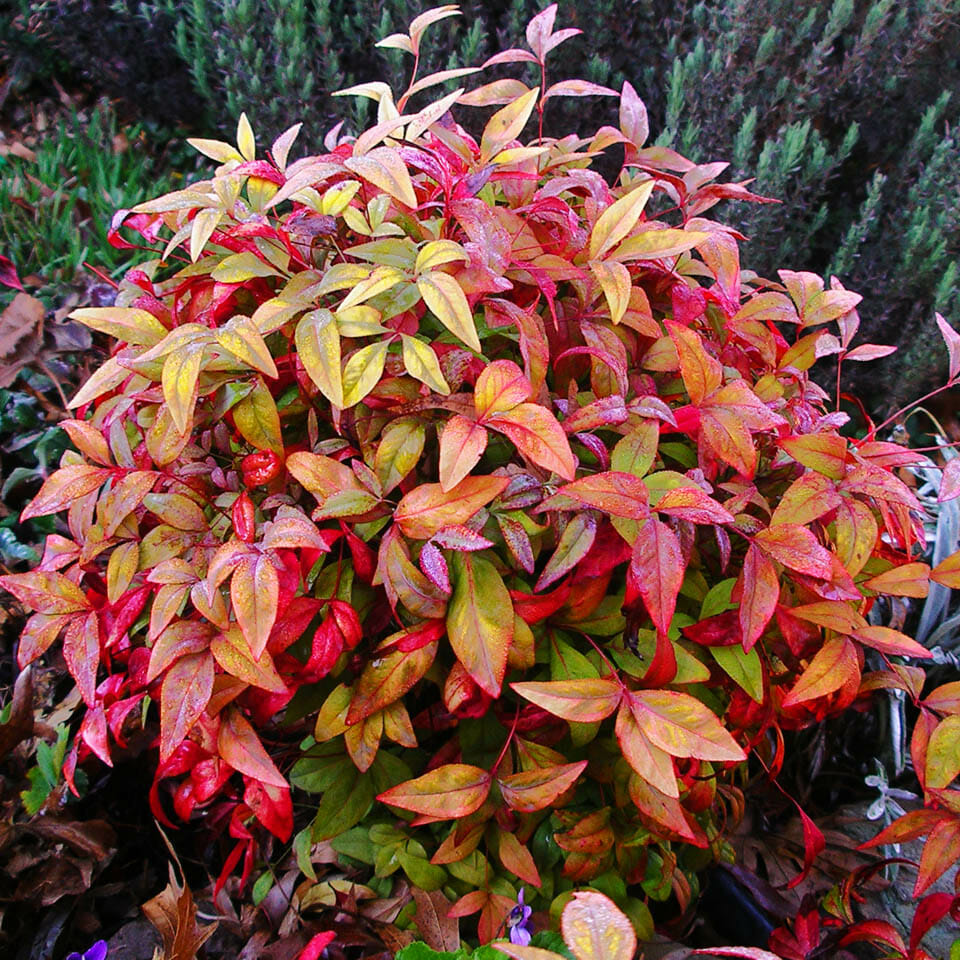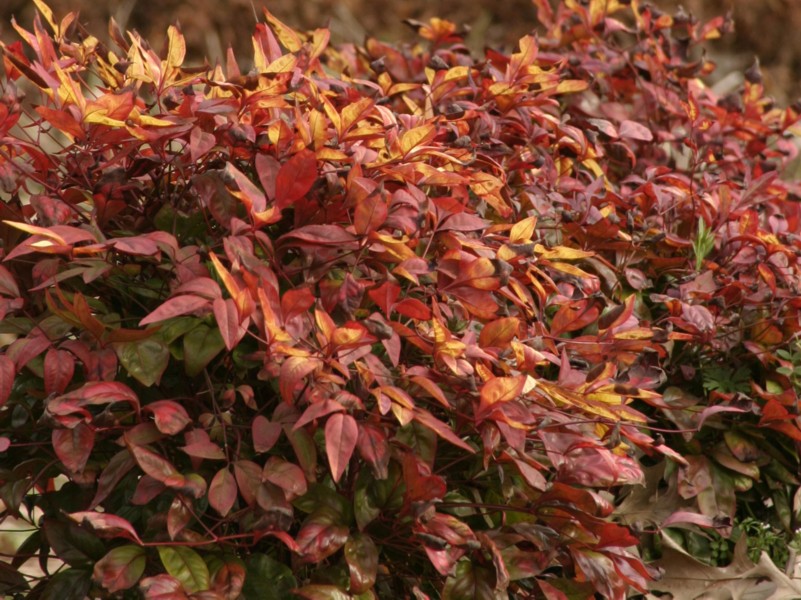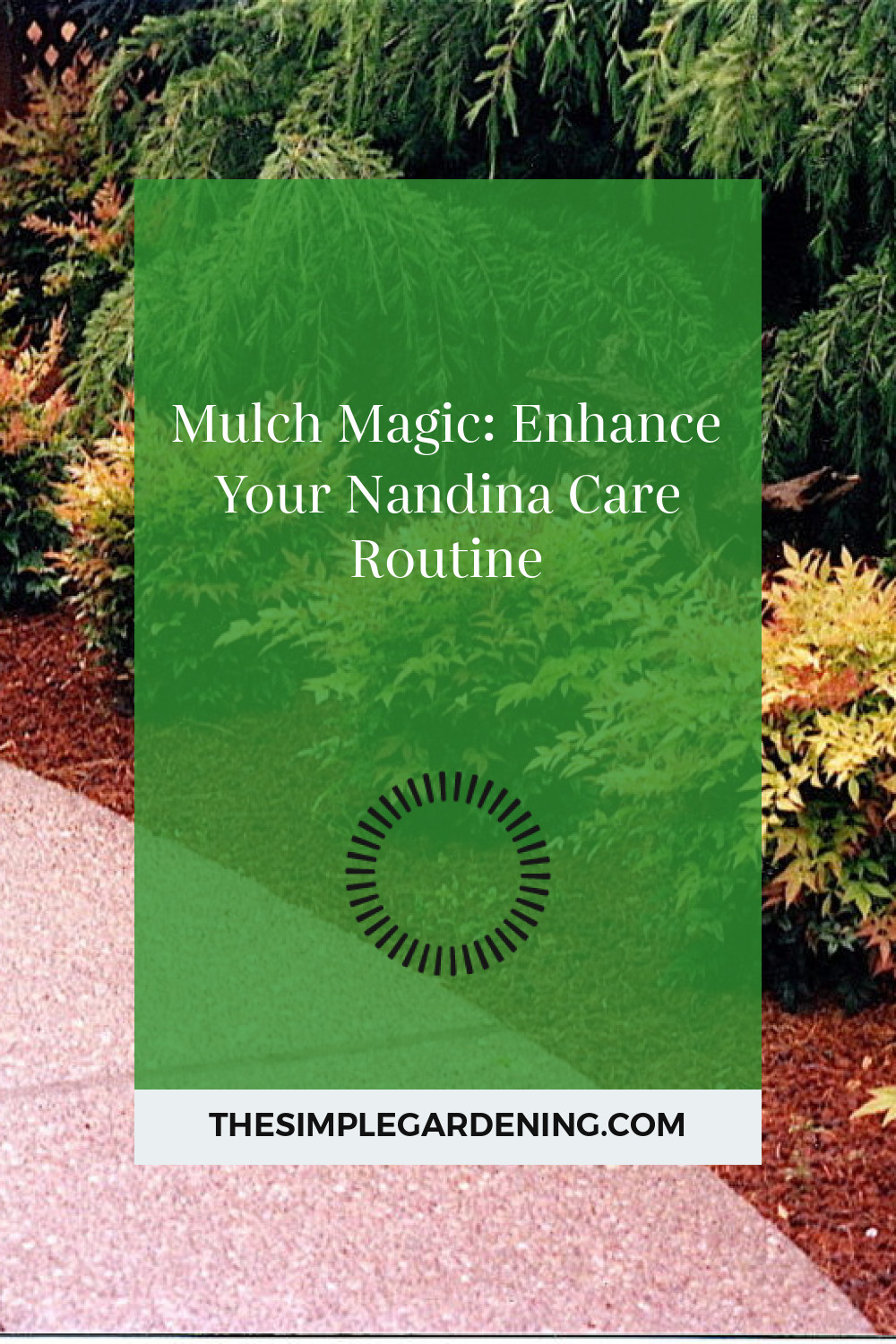Mulching is a crucial practice in gardening that significantly enhances the health and appearance of your Nandina plants. Known for its evergreen beauty and hardiness, Nandina, or heavenly bamboo, benefits immensely from proper mulching techniques. This article explores the importance of mulching, various types of mulch, and how to effectively apply and maintain mulch around your Nandina plants to ensure they thrive.
Understanding the Importance of Mulching in Nandina Care
Mulching serves multiple purposes in Nandina care, from retaining soil moisture to suppressing weeds. It creates a protective layer that fosters healthier soil and provides an aesthetically pleasing garden bed. Let’s dive into the benefits and techniques of mulching to make your Nandina plants flourish.
Introducing Nandina Mulching Techniques for Optimal Plant Health
Effective mulching involves choosing the right type of mulch, applying it correctly, and maintaining it throughout the year. We’ll discuss the best practices for mulching Nandina plants, including timing, depth, and maintenance, to keep your garden vibrant and healthy.
Benefits of Mulching
Exploring the Benefits of Mulch for Nandina Plants
Mulching offers several advantages, making it an essential part of Nandina care. Here are some key benefits:
- Moisture Retention: Mulch helps the soil retain moisture, reducing the need for frequent watering.
- Weed Suppression: A thick layer of mulch prevents weeds from emerging and competing with your Nandina for nutrients.
- Soil Temperature Regulation: Mulch insulates the soil, keeping it cool in summer and warm in winter.
- Improved Soil Health: Organic mulches decompose over time, enriching the soil with essential nutrients.
Table 1: Benefits of Mulching
| Benefit | Description |
|---|---|
| Moisture Retention | Reduces evaporation, keeps soil consistently moist. |
| Weed Suppression | Blocks sunlight, inhibits weed growth. |
| Soil Temperature Control | Insulates soil, stabilizes temperature fluctuations. |
| Soil Health Improvement | Adds organic matter to soil as it decomposes. |
| Erosion Prevention | Reduces soil erosion from wind and rain. |

Source Image: detailslandscapeart.com
How Mulch Improves Soil Moisture Retention and Weed Suppression
By covering the soil, mulch reduces the evaporation rate, ensuring that the moisture stays where the plant roots can access it. Simultaneously, mulch creates a physical barrier that prevents weed seeds from germinating, significantly reducing the labor involved in weed control.
Table 2: Mulch Benefits in Detail
| Function | How it Helps Nandina Plants |
|---|---|
| Moisture Retention | Keeps roots hydrated, reduces watering frequency. |
| Weed Suppression | Decreases competition for nutrients and water. |
| Soil Temperature | Protects roots from extreme temperature changes. |
| Organic Enrichment | Adds nutrients to the soil, promotes healthy growth. |
Types of Mulch
Different Types of Mulch Suitable for Nandina Plants
Mulches can be broadly categorized into organic and inorganic types, each with its own set of benefits.
- Organic Mulches: These include wood chips, bark, straw, and compost. They decompose over time, adding nutrients to the soil.
- Inorganic Mulches: These include gravel, stones, and landscape fabrics. They don’t decompose but provide excellent weed control and soil protection.
Table 3: Types of Mulch
| Type of Mulch | Examples | Benefits |
|---|---|---|
| Organic | Wood chips, Bark, Straw | Adds nutrients, improves soil health |
| Inorganic | Gravel, Stones, Fabric | Long-lasting, excellent weed control |
Comparing Organic and Inorganic Mulch Options
Choosing between organic and inorganic mulch depends on your specific needs and garden conditions. Organic mulches improve soil quality over time but require regular replenishment. Inorganic mulches are durable and low-maintenance but don’t enhance soil fertility.
Table 4: Comparison of Mulch Types
| Feature | Organic Mulch | Inorganic Mulch |
|---|---|---|
| Decomposition | Yes, adds nutrients | No, long-lasting |
| Maintenance | Needs regular replenishment | Low-maintenance |
| Soil Health | Improves over time | No impact on soil fertility |
| Aesthetic Appeal | Natural look, blends well | Variety of colors, modern look |

Source Image: www.dreamstime.com
Mulching Timing
When to Mulch Nandina Plants: Best Practices for Seasonal Timing
The timing of mulch application is crucial for maximizing its benefits. Typically, mulching should be done in early spring or late fall.
- Spring Mulching: Helps retain soil moisture and suppress weed growth during the growing season.
- Fall Mulching: Protects roots from winter cold and reduces soil erosion from rain and snow.
Table 5: Seasonal Mulching Tips
| Season | Benefits | Best Practices |
|---|---|---|
| Spring | Moisture retention, weed control | Apply after soil warms up, before weeds emerge |
| Fall | Root protection, erosion control | Apply before first frost, after leaf drop |
Mulching Strategies for Newly Planted vs. Established Nandina
Newly planted Nandina requires a different mulching approach compared to established plants.
- Newly Planted: Apply a thicker layer of mulch to help retain moisture and protect young roots.
- Established Plants: A thinner layer is sufficient, as their root systems are more developed.
Table 6: Mulching Strategies
| Plant Stage | Mulch Layer Depth | Purpose |
|---|---|---|
| Newly Planted | 3-4 inches | Moisture retention, root protection |
| Established | 2-3 inches | Maintain soil health, suppress weeds |

Source Image: www.pinterest.com
Preparing the Area
Preparing the Soil Before Mulching: Weed Removal and Soil Conditioning
Proper soil preparation is essential for effective mulching. Start by removing any existing weeds and debris from the area. This step prevents weeds from growing through the mulch layer.
- Weed Removal: Manually pull out weeds or use a hoe to clear the area.
- Soil Conditioning: Loosen the soil with a garden fork to improve aeration and water penetration.
Table 7: Soil Preparation Steps
| Step | Description | Tools Needed |
|---|---|---|
| Weed Removal | Clear all weeds and debris | Hoe, garden gloves |
| Soil Conditioning | Loosen soil, improve aeration | Garden fork, rake |
Creating a Weed Barrier Under Mulch to Prevent Weed Growth
Adding a weed barrier under the mulch further prevents weed growth. Use landscape fabric or newspaper as a barrier before applying mulch.
Table 8: Weed Barrier Options
| Barrier Type | Benefits | Installation Tips |
|---|---|---|
| Landscape Fabric | Durable, long-lasting | Cut to fit area, secure edges |
| Newspaper | Biodegradable, adds organic matter | Layer 2-3 sheets thick |
Mulching Depth
Determining the Optimal Mulch Depth for Nandina Plants
The depth of mulch is critical for its effectiveness. Too much can suffocate the roots, while too little won’t provide adequate protection.
- Optimal Depth: Generally, 2-4 inches is ideal for most Nandina plants.
Table 9: Recommended Mulch Depth
| Plant Type | Recommended Depth | Purpose |
|---|---|---|
| Ground Planting | 3-4 inches | Moisture retention, weed suppression |
| Container Planting | 2-3 inches | Moisture retention, aesthetic appeal |
Guidelines for Mulch Depth Based on Planting Location and Climate
Adjust mulch depth based on your local climate and planting location. In hotter climates, a thicker layer helps retain moisture, while in cooler climates, a thinner layer prevents root rot.
Table 10: Mulch Depth by Climate
| Climate | Recommended Depth | Additional Tips |
|---|---|---|
| Hot, Dry | 4 inches | Use moisture-retentive organic mulch |
| Cool, Wet | 2-3 inches | Ensure proper drainage, use inorganic mulch |

Source Image: www.thetutuguru.com.au
Nandina Mulching Techniques
Mulching Techniques
Applying Mulch Around Nandina Plants: Proper Placement and Spacing
Proper placement of mulch is vital to avoid damaging your Nandina plants. Keep mulch away from the stem to prevent rot and pest infestation.
- Spacing: Leave a 2-3 inch gap around the stem.
- Placement: Spread mulch evenly around the plant base.
Table 11: Mulch Placement Tips
| Tip | Description |
|---|---|
| Avoid Stem Contact | Prevents rot and pests |
| Even Spread | Ensures consistent soil coverage |
| Edge Smoothing | Enhances appearance, prevents runoff |
Mulching Techniques to Avoid Smothering Nandina Roots
Avoid piling mulch too high or directly against the plant stem. This can lead to root suffocation and stem rot.
- Volcano Mulching: Avoid creating a volcano shape around the stem.
- Flat Mulching: Spread mulch in a flat, even layer.
Table 12: Mulching Techniques to Avoid
| Technique | Reason to Avoid | Better Alternative |
|---|---|---|
| Volcano Mulching | Causes stem rot, pest infestation | Flat, even layer |
| Direct Stem Contact | Leads to rot and disease | 2-3 inch gap around stem |
Mulch Application
Tips for Properly Applying Mulch to Nandina Beds and Borders
When applying mulch to Nandina beds, follow these tips for best results:
- Clear Debris: Remove any fallen leaves or old mulch.
- Layering: Apply mulch in layers, not all at once, to ensure even coverage.
- Edge Trimming: Keep mulch within garden borders for a neat appearance.
Table 13: Mulch Application Tips
| Tip | Description |
|---|---|
| Clear Debris | Prevents decay and disease |
| Layering | Ensures even coverage and depth |
| Edge Trimming | Maintains neat and defined garden beds |
Mulching Around Nandina Containers and Potted Plants
For potted Nandina, mulch helps maintain soil moisture and temperature. Use a thinner layer to avoid excessive weight on the soil surface.
- Container Mulch Depth: 1-2 inches.
- Material: Lightweight organic mulch like compost or pine needles.
Table 14: Container Mulching Tips
| Tip | Description |
|---|---|
| Thin Layer | Prevents soil compaction |
| Lightweight Material | Easy to handle, doesn’t overburden roots |
| Regular Refreshing | Keeps mulch effective and fresh |

Source Image: www.dreamstime.com
Mulch Maintenance
Maintaining Mulch Beds: Raking, Fluffing, and Refreshing Mulch
Regular maintenance ensures your mulch stays effective. Rake and fluff mulch to prevent compaction and refresh it annually to maintain its benefits.
- Raking: Aerates the mulch, preventing mold and compaction.
- Fluffing: Keeps mulch loose and allows air circulation.
- Refreshing: Adds a new layer of mulch to replenish nutrients and maintain depth.
Table 15: Mulch Maintenance Tasks
| Task | Frequency | Purpose |
|---|---|---|
| Raking | Monthly | Aerates, prevents mold |
| Fluffing | Every 3 months | Maintains loose, breathable mulch |
| Refreshing | Annually | Replenishes nutrients, maintains depth |
Addressing Issues Such as Mold, Fungi, and Pests in Mulched Areas
Mulch can sometimes harbor mold, fungi, or pests. Address these issues promptly to protect your Nandina plants.
- Mold and Fungi: Rake and fluff mulch regularly. Remove any visible mold.
- Pests: Use natural pest repellents and keep mulch away from the plant stem.
Table 16: Troubleshooting Mulch Issues
| Issue | Solution |
|---|---|
| Mold and Fungi | Rake and fluff mulch, improve aeration |
| Pests | Apply natural repellents, maintain proper spacing |
Mulching for Winter Protection
Using Mulch to Provide Winter Protection for Nandina Plants
Mulching in winter provides essential protection for Nandina plants. It insulates the roots and prevents soil erosion.
- Winter Mulch Depth: 3-4 inches.
- Timing: Apply after the first frost.
Table 17: Winter Mulching Tips
| Tip | Description |
|---|---|
| Depth | 3-4 inches for adequate insulation |
| Timing | After first frost to protect roots |
| Material | Straw, pine needles for best insulation |
Protecting Nandina Roots from Frost and Freezing Temperatures
Proper mulching protects Nandina roots from harsh winter conditions, preventing frost damage and root freezing.
Table 18: Frost Protection Strategies
| Strategy | Benefit |
|---|---|
| Thick Layer | Insulates roots, prevents freezing |
| Organic Material | Adds warmth as it decomposes |
| Consistent Coverage | Ensures uniform protection |

Source Image: www.diyncrafts.com
Mulching for Water Conservation
How Mulch Helps Conserve Water and Reduce Watering Frequency
Mulch significantly reduces water evaporation from the soil, helping conserve water and reducing the need for frequent watering.
- Water Retention: Mulch keeps soil moist, especially during dry spells.
- Efficiency: Reduces water waste by minimizing runoff.
Table 19: Water Conservation Benefits
| Benefit | Description |
|---|---|
| Reduced Evaporation | Keeps soil moist longer |
| Less Frequent Watering | Saves time and resources |
| Improved Plant Health | Maintains consistent moisture levels |
Mulching Strategies for Drought-Tolerant Nandina Varieties
For drought-tolerant Nandina, mulch further enhances their ability to thrive in dry conditions.
- Thicker Mulch Layer: 4 inches to maximize moisture retention.
- Organic Mulch: Helps retain moisture and adds nutrients.
Table 20: Drought-Tolerant Mulching Tips
| Tip | Description |
|---|---|
| Thicker Layer | Maximizes moisture retention |
| Organic Material | Enhances soil health |
| Regular Maintenance | Keeps mulch effective |
Mulching for Erosion Control
Preventing Soil Erosion with Mulch: Strategies for Sloped Areas
Mulch is effective in preventing soil erosion, especially in sloped garden areas. It stabilizes the soil and prevents runoff.
- Stabilization: Mulch anchors soil, reducing erosion.
- Layering: Apply in layers to prevent displacement.
Table 21: Erosion Control Strategies
| Strategy | Description |
|---|---|
| Layering | Prevents mulch displacement |
| Stabilization | Anchors soil, reduces erosion |
| Heavy Mulch | More effective on slopes |
Mulching Techniques to Protect Nandina Plants from Runoff and Erosion
To protect Nandina from runoff and erosion, apply mulch carefully around the plants and reinforce sloped areas with additional measures.
Table 22: Erosion Protection Tips
| Tip | Description |
|---|---|
| Mulch Layering | Prevents displacement |
| Reinforce Slopes | Use stones or barriers for added stability |
| Regular Checks | Inspect and adjust mulch as needed |

Source Image: www.pinterest.com.au
Nandina Mulching Techniques
Mulching for Aesthetic Appeal
Enhancing the Visual Appeal of Nandina Beds with Mulch
Mulch not only benefits plant health but also enhances the visual appeal of your garden. Choose colors and textures that complement Nandina foliage.
- Color Choices: Select mulch colors that enhance the natural beauty of Nandina.
- Texture: Use mulch with a texture that adds to the aesthetic value of your garden.
Table 23: Aesthetic Mulching Tips
| Tip | Description |
|---|---|
| Color Matching | Choose colors that complement foliage |
| Texture Variety | Adds visual interest to garden beds |
| Uniform Coverage | Ensures neat, attractive appearance |
Choosing Mulch Colors and Textures to Complement Nandina Foliage
Nandina’s vibrant foliage pairs well with various mulch colors and textures. Experiment to find the best combination for your garden.
Table 24: Color and Texture Options
| Color Option | Suitable for |
|---|---|
| Red Mulch | Enhances red and orange foliage |
| Brown Mulch | Natural look, blends with most plants |
| Black Mulch | Modern, striking contrast |
| Pine Needles | Adds a rustic, natural texture |
Mulching with Companion Plants
Pairing Nandina with Complementary Plants in Mulched Beds
Companion planting with Nandina in mulched beds can enhance both plant health and garden aesthetics. Choose plants with similar water and light needs.
- Companions: Plants that thrive in similar conditions as Nandina.
- Benefits: Improved plant health, reduced pest issues.
Table 25: Companion Plants for Nandina
| Plant | Benefit |
|---|---|
| Hostas | Complement Nandina’s texture and color |
| Ferns | Enhance moisture retention, visual appeal |
| Hydrangeas | Add height and color contrast |
Using Mulch to Create Cohesive Planting Designs Around Nandina
Mulch can help create cohesive planting designs by providing a unified background that highlights your plant arrangements.
Table 26: Design Tips with Mulch
| Tip | Description |
|---|---|
| Unified Background | Provides a consistent look |
| Highlight Plants | Makes Nandina and companions stand out |
| Texture Contrast | Adds depth and interest to design |

Source Image: mulchmasters.com
Mulch Alternatives
Exploring Alternative Ground Cover Options for Nandina Beds
In addition to traditional mulch, consider alternative ground covers that can offer similar benefits and a unique look.
- Ground Covers: Low-growing plants that cover soil.
- Benefits: Reduces weeds, retains moisture, adds biodiversity.
Table 27: Ground Cover Alternatives
| Alternative | Benefits |
|---|---|
| Creeping Thyme | Low maintenance, fragrant |
| Clover | Fixes nitrogen, improves soil health |
| Sedum | Drought-tolerant, attractive foliage |
Natural and Creative Mulch Alternatives for Nandina Plantings
Explore creative mulch alternatives like recycled materials or living mulches that offer unique benefits and aesthetics.
Table 28: Creative Mulch Alternatives
| Alternative | Benefits |
|---|---|
| Recycled Rubber | Long-lasting, eco-friendly |
| Living Mulch | Adds biodiversity, improves soil health |
| Decorative Stones | Aesthetic appeal, durable |
Celebrating the Role of Mulch in Nandina Care: A Key Component for Healthy, Vibrant Plants
Mulching plays an integral role in maintaining the health and beauty of your Nandina plants. From moisture retention to weed suppression and aesthetic enhancement, mulch provides numerous benefits that contribute to a thriving garden.
Encouraging Gardening Enthusiasts to Incorporate Mulching Techniques into Their Nandina Care Routine
Incorporate these mulching techniques into your Nandina care routine to ensure your plants remain healthy, vibrant, and beautiful year-round. Happy gardening!

